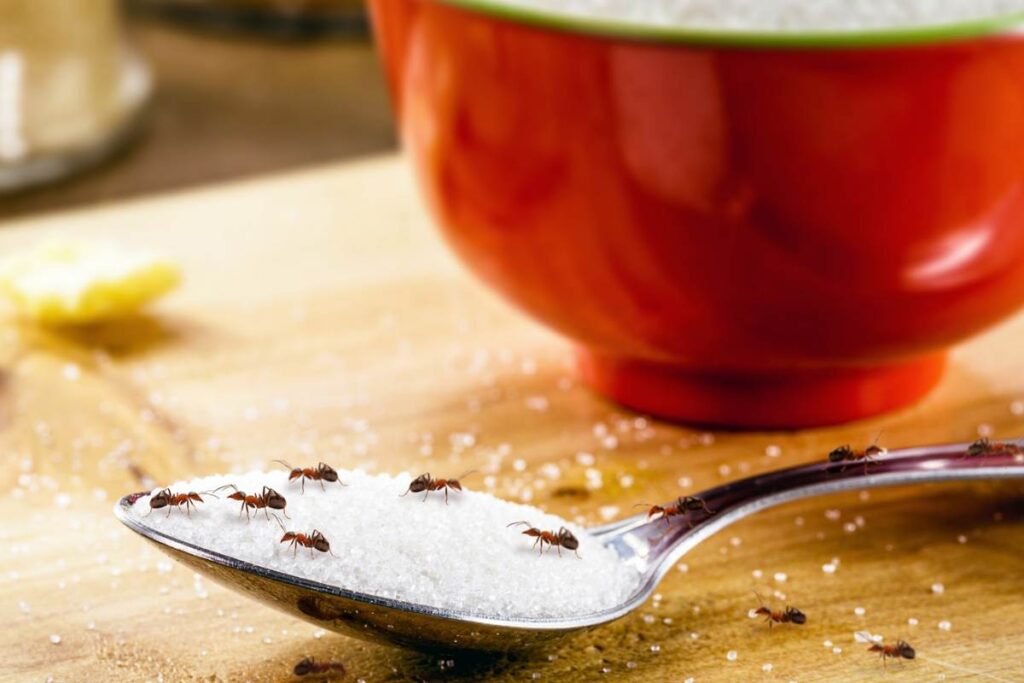Keeping your kitchen free from pests is crucial for a healthy and hygienic cooking environment. Pests like cockroaches, ants, and mice can contaminate food and spread diseases. Therefore, managing these unwelcome guests is essential to maintain a clean and safe kitchen.
In the quest for a pest-free kitchen, enlisting the help of pest control companies such as Pestline offers a comprehensive solution. With expertise in various kitchen pests, they provide targeted services to keep your cooking space bug-free, integrating seamlessly into your overall pest management strategy without feeling out of place.
Read on for valuable insights and practical tips to keep your cooking space bug-free.
Identify Common Pests
Identifying the common pests that invade kitchens is a crucial initial step in effective pest management. Recognizing these invaders helps in developing targeted strategies to keep them at bay.
Below are detailed descriptions of the usual suspects:
- Cockroaches: These pests are notorious for their resilience, surviving in almost any environment. They’re attracted to food remnants and water sources, spreading bacteria and pathogens that can lead to health issues.
- Ants: Quick to discover food sources, ants can form long trails to and from your pantry, making them more than just a nuisance. They’re particularly drawn to sweet substances and can contaminate food items swiftly.
- Rodents: Mice and rats pose serious risks by contaminating food with their droppings and urine. They can also chew through wires and packaging, leading to property damage.
- Fruit flies: These pests are attracted to fermenting fruits and vegetables, often invading kitchens where such items are left uncovered. Their rapid reproduction rate can quickly turn a small problem into an infestation.
Addressing these pests requires a combination of cleanliness, vigilance, and sometimes professional intervention.

Maintain Cleanliness
Keeping your kitchen spotless is a cornerstone of pest management. A tidy environment offers fewer attractions for pests, making it harder for them to thrive, and contributes to a better-looking kitchen.
Below are some practices to ensure cleanliness:
- Wipe down surfaces: After every cooking session, it’s vital to clean counters and stovetops to remove food particles and residues that can attract pests.
- Dispose of garbage: Ensure trash is taken out regularly and use bins with tight-fitting lids to prevent pests from accessing food waste.
- Store food properly: Utilizing airtight containers for food storage serves a dual purpose: it prevents pests from infiltrating your provisions and helps maintain the freshness of your food.
- Manage moisture: Fix leaky faucets and avoid leaving standing water, as moisture attracts pests like cockroaches and ants.
Adhering to these cleanliness practices deters pests and contributes to a healthier, more inviting kitchen atmosphere.
Seal Entry Points
Securing your kitchen against pests involves more than just cleanliness and repelling measures—it requires physically blocking their entry points. This proactive approach stops pests before they become a problem inside your home.
Below are effective measures to seal off entry points:
- Seal cracks and crevices: Use caulk to fill gaps around cabinets, piping, and windows. This prevents pests like cockroaches and ants from sneaking in.
- Install door sweeps: Attaching sweeps to the bottom of exterior doors helps block the gap under the door, a common entry point for rodents and insects.
- Repair screens: Fix or replace damaged screens on windows and doors. This keeps flying insects, such as mosquitoes and fruit flies, outside where they belong.
Implementing these strategies creates a barrier that pests find challenging to bypass. Keeping pests out protects your food and health and provides peace of mind, knowing your kitchen is secure from these unwelcome guests.
Use Natural Repellents
Turning to natural repellents is a safe and eco-friendly way to deter pests from your kitchen. These alternatives offer effective solutions without harsh chemicals, making your cooking space safer for food preparation and family life.
Below are some proven natural repellents and their applications:
- Peppermint oil: This essential oil is not just refreshing; it’s a potent deterrent against mice and spiders. A few drops in strategic locations can keep these pests at bay.
- Vinegar: Its acidic nature makes vinegar an excellent repellent for ants. Spraying vinegar and water solution around entry points and countertops can disrupt ant trails and deter their return.
- Diatomaceous earth: This fine powder is harmless to humans but deadly to insects with exoskeletons, such as cockroaches. Sprinkling it in areas where pests are likely to enter can be an effective barrier.
Incorporating these natural solutions into your pest management strategy keeps pests away and ensures your kitchen remains a safe, chemical-free environment.
Conclusion
Embracing these strategies leads to a kitchen that’s not only clean but also resilient against pests. Each step contributes to a holistic approach to pest management, from identifying potential invaders to implementing preventative measures and utilizing natural repellents. This guide equips you with the knowledge to protect your cooking space effectively, ensuring it remains a safe, hygienic place for preparing meals. Remember, consistent effort and vigilance are key to maintaining a pest-free environment.











